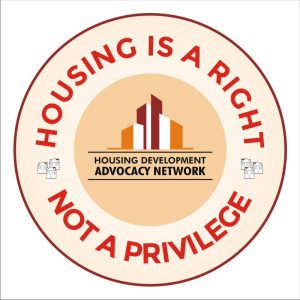Cities are at an inflection point. The scale of change needed to meet urgent challenges while retaining top talent and attracting capital in an increasingly mobile, discerning and price-sensitive world continues to grow.
Urbanization is placing pressure on existing infrastructure, while the costs and complexity of providing critical services continue to rise. Compounding these are macroeconomic constraints and political uncertainty that limit the speed at which city authorities and private-sector players can intervene with critical investment.
Concerns are particularly acute for owners, investors, managers and occupiers of the built environment. Income-producing real estate totals more than $62 trillion globally, with more than 19% of this owned by institutional investors. Around 58% of this value is found in 40 metropolitan areas, underscoring cities’ importance as a store of global wealth and the need to protect value through investment and regeneration.
Doing nothing is not an option; if left unaddressed, the inability to manage urbanization sustainably and efficiently will degrade economic competitiveness and make it difficult for cities to retain skilled talent and institutions. Traditional approaches to handling urbanization and development will need to adapt if cities are to succeed in effecting bold plans for long-term growth.
Tackling urban growth
Strategies to accommodate urban growth traditionally fall into two complementary tracks: regulatory-based and investment-based.

Regulatory-based approaches are typically focused on creating more flexible land use policies, speeding up time from application to delivery, and simplifying and standardising sustainability reporting frameworks. The inherently political nature of this presents an additional complication as cities, and even countries, attempt to substantially increase housing production targets while streamlining planning processes.
Investment-based approaches typically involve building new infrastructure or upgrading a city’s existing supply through a mix of public and private capital. This includes investment in public transport, energy, water, and telecommunications, alongside improvements to public spaces and experiences for residents, workers and visitors. Higher interest rates combined with the rising cost of labour and materials, however, only make it harder to deliver increasingly complex projects on time and within budget.
But cities are resilient, and many are pioneering innovative solutions to meet their most pressing needs. Importantly, these strategies are combining elements from both the regulatory and investment approaches to achieve higher returns on investment while accelerating the delivery of critical infrastructure and real estate.
In recent years, three new groups of policies have emerged: ready-made planning solutions, alternative financing mechanisms, and digital-first planning optimization. Deploying these approaches in combination can yield substantial benefits for the built environment, help city authorities in achieving overarching strategic objectives, and open opportunities for the real estate sector to address shortfalls.
- Ready-made solutions are defined by their compressed project delivery timeframes and reduced planning complexity, leading to quicker increases in the housing supply. The New South Wales Government’s “pattern book” is a notable recent example. In partnership with architects, the state’s planning and development departments selected six winning designs for mid- and low-rise housing that meet standards for architectural quality, energy efficiency, and reduced water consumption and can be used by developers to undertake an expedited approval process. Design solutions such as these form a core component of a multi-faceted approach to housing delivery, which also comprises more flexible land use policies and the expansion of rapid transit networks and associated infrastructure.

- Amidst a climate of heightened scrutiny around public finances, alternative financing mechanisms are being seen as an effective means of harnessing widespread “dry powder” capital from private sector sources. This is particularly the case for public transport and the expansion of other infrastructure. Montreal’s REM light metro system, which opened its first phase in 2023, exemplifies the benefits of alternative financing mechanisms. Funded primarily through an arm of the province’s public pension fund (CDPQ), public bodies faced lower upfront costs, while CDPQ has an incentive to plan over the longer-term through uplift in land values, development and improved mobility for the broader Montreal metropolitan area. Notably, CDPQ’s deep capital pool enabled it to absorb a spike in costs due to supply chain issues in the aftermath of the pandemic. The REM project also helped CDPQ diversify its revenue streams and improve its financial stability.
- Cities are also looking at how newer technologies can help leverage their data to optimise outcomes for complex planning. Through real-time city models known as digital twins and similar technologies, authorities can analyse the effects of future development, model a variety of scenarios nearly instantly, incorporate real-time information, and make the planning process more transparent. Singapore has been a leader in this through its Virtual Singapore application. In addition to spatial planning, Virtual Singapore helps to streamline city management, providing information about the built environment and human capital for businesses and enabling rapid responses to public threats, such as flooding.
Future of urbanization
Ultimately, authorities, institutions and investors will need to partner more strategically to thrive in this new era of urbanization. Innovative thinking, targeted planning, and frameworks that allow cities to address multiple goals simultaneously will be fundamental if we are to succeed in preserving the value of the built environment. At the same time, authorities will need to balance the risks of increasingly ambitious solutions by engaging the right talent to ensure their plans and investments are deliverable.
With proactive collaboration between the public and private sectors, cities will remain fertile ground for innovation, prosperity and culture into the future.
Source: weforum



